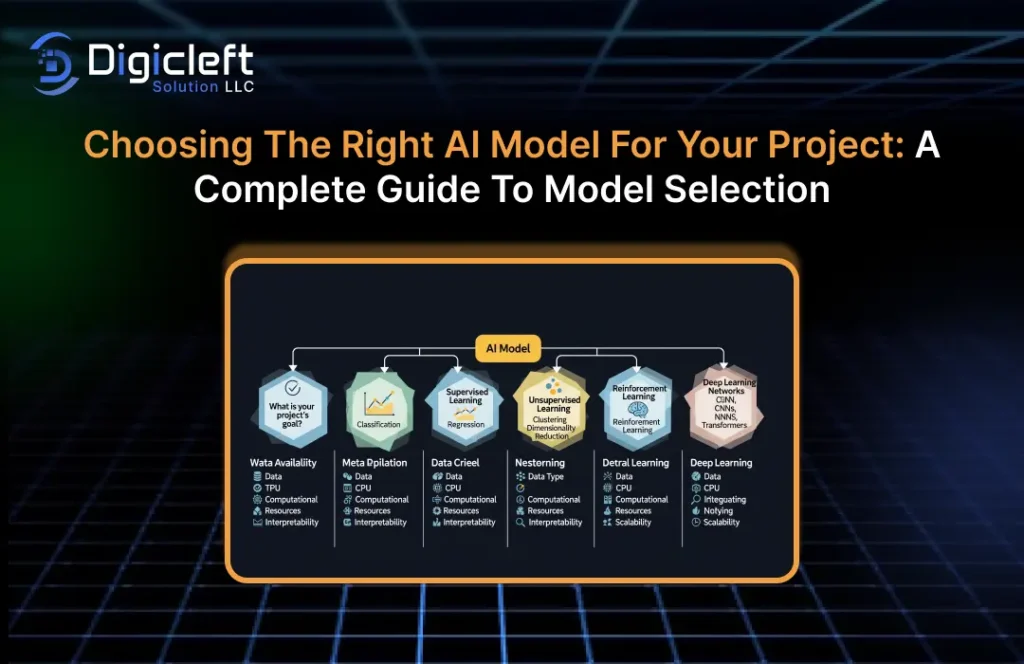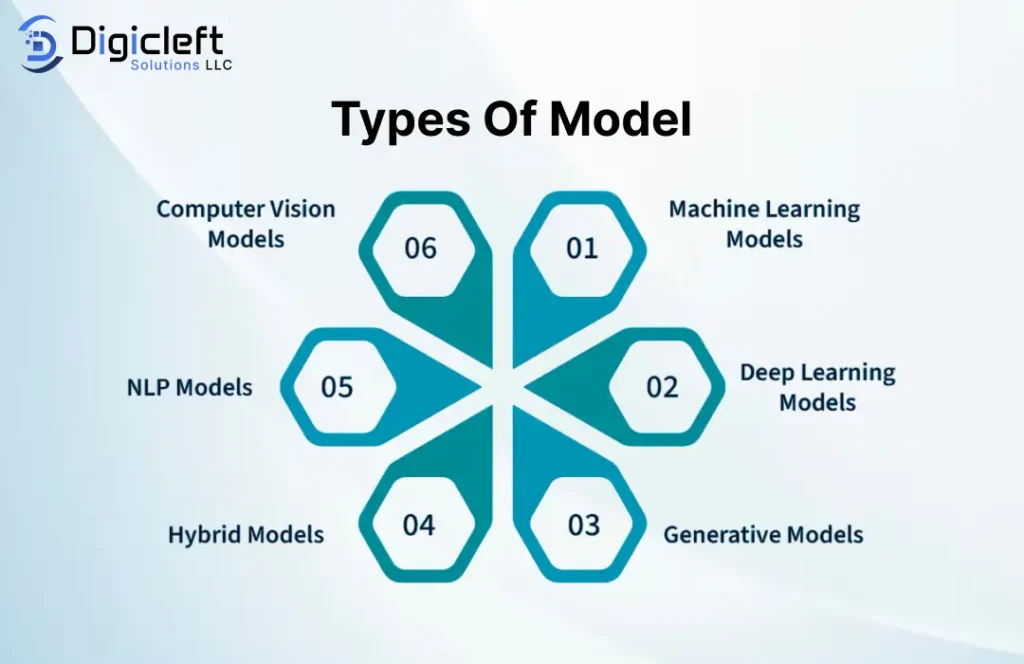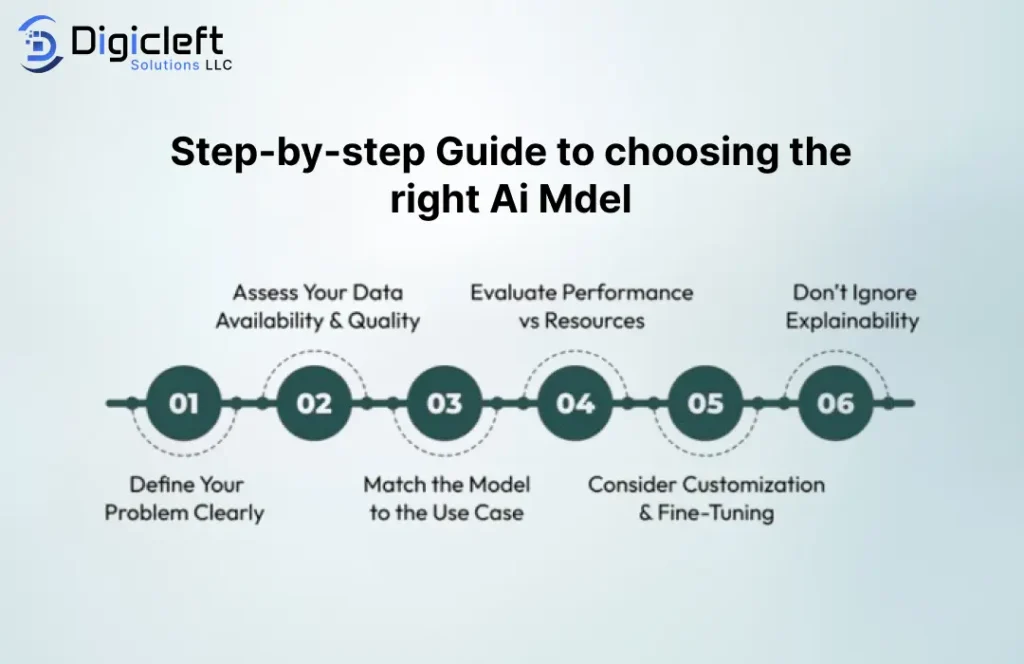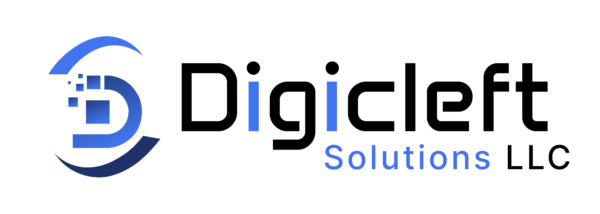
Choosing the right AI model is like picking the right vehicle for a journey. If you’re climbing mountains, you wouldn’t choose a sports car, right? This guide walks you step by step through the maze of AI models so you can make confident choices.
Understanding AI Models
What is an AI Model?
At its core, an AI model is a mathematical system trained to recognize patterns and make predictions. Think of it as the brain behind your AI application.
Key Types of AI Models

- Machine Learning Models – Simpler models like regression, decision trees, and clustering. Great for structured data.
- Deep Learning Models – Neural networks inspired by the human brain. Ideal for images, text, and complex patterns.
- Pre-trained Models – Ready-made models like GPT (text) or ResNet (images) that save time and resources.
- Custom Models – Built from scratch for unique business needs, but require more effort and data.
Factors to Consider Before Choosing an AI Model
- Define Your Business Goal – Are you predicting churn, recognizing images, or automating chat replies?
- Data Availability and Quality – No data, no AI. Dataset volume and quality drive model suitability.
- Budget and Computational Resources – Deep learning needs GPUs, simpler ML runs on modest hardware.
- Interpretability vs. Accuracy – Sometimes transparency matters more than accuracy (e.g., loan approvals).
- Scalability and Deployment – Will it run on edge devices or in the cloud?
Popular AI Models and Use Cases
- Linear & Logistic Regression – Trend forecasting and binary classification.
- Decision Trees & Random Forests – Classification tasks with interpretable results.
- Support Vector Machines (SVMs) – Effective in text classification and high-dimensional data.
- Neural Networks – Powering voice assistants, recommender systems, and medical imaging.
- NLP Models (BERT, GPT) – For sentiment analysis, chatbots, and translation.
- Computer Vision Models (CNNs) – Facial recognition, defect detection, and quality control.
Step-by-Step Guide to Selecting the Right Model

- Identify the Problem Type – Regression, classification, clustering, or reinforcement learning?
- Evaluate Your Dataset – Big datasets suit deep learning; small ones suit traditional ML.
- Match Problem with Model Family – Each task has a “go-to” set of models.
- Run Experiments – Don’t just rely on theory—test multiple models.
- Validate & Test Performance – Use real-world data to avoid overfitting.
Practical Examples of Model Selection
- Healthcare – Logistic regression for disease prediction, CNNs for image diagnosis.
- Retail – Random forests and gradient boosting for churn prediction.
- Finance – SVMs and neural nets for fraud detection.
- Chatbots – NLP models like GPT or RNNs for natural conversations.
- Manufacturing – CNNs for defect detection faster than humans.
Common Mistakes to Avoid
- Jumping straight to deep learning without trying simpler options.
- Ignoring data preprocessing.
- Overfitting with overly complex models.
- Neglecting explainability.
Tools and Frameworks for Model Selection
- TensorFlow & PyTorch – For deep learning models.
- Scikit-learn – For traditional machine learning.
- AutoML Platforms – For quick model trials.
- Digicleft Solution – Tailored AI development and deployment support.
Future Trends in AI Model Selection
- Foundation Models – Pre-trained giants dominating NLP and vision.
- Explainable AI (XAI) – More focus on interpretability and trust.
- Federated Learning – Privacy-first AI for healthcare and finance.
Conclusion
Choosing the right AI model isn’t about grabbing the fanciest tool it’s about finding the one that best fits your data, goals, and resources. Start simple, experiment, and don’t shy away from testing multiple options. The future of AI is exciting, but success depends on making the right choices today.
FAQs
1. How do I know which AI model suits my design stylish?
launch by relating your problem type, dataset size, and business pretensions. also shortlist models that fit.
2. Should I always use deep literacy for better delicacy?
Not inescapably. Simpler models are frequently briskly, cheaper, and easier to interpret.
3. What part does data play in model selection?
Data quality and size frequently mandate the model choice further than anything differently.
4.Canpre-trained models save time for my design?
Yes! They’re ideal for NLP and vision tasks where large datasets are needed.
5. What’s Digicleft result in AI model selection?
Digicleft result refers to customized AI model development and deployment support acclimatized to business requirements.


